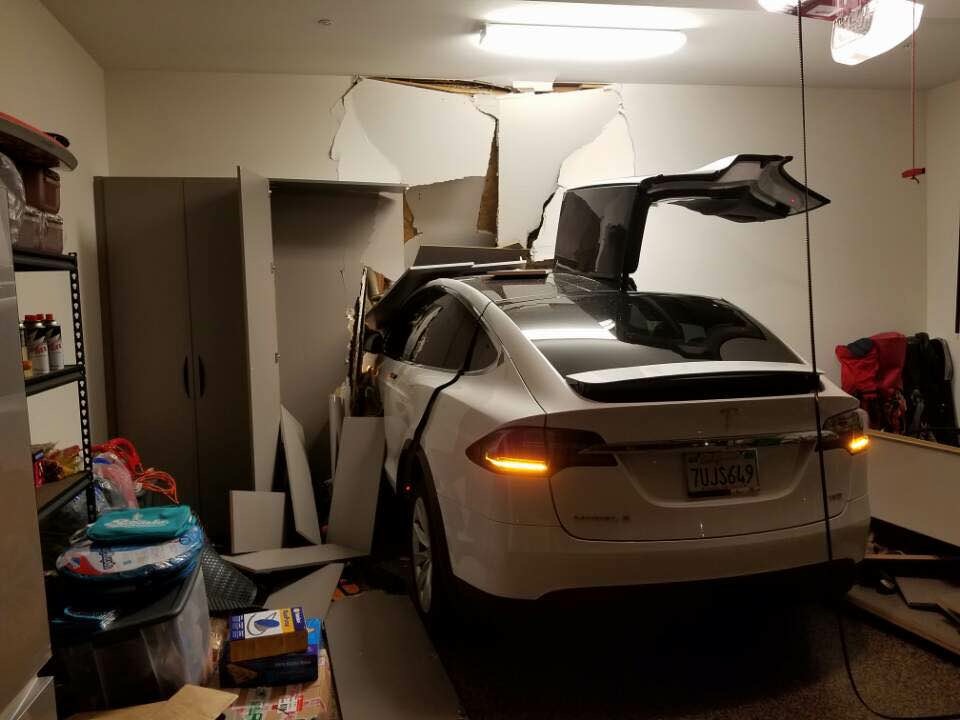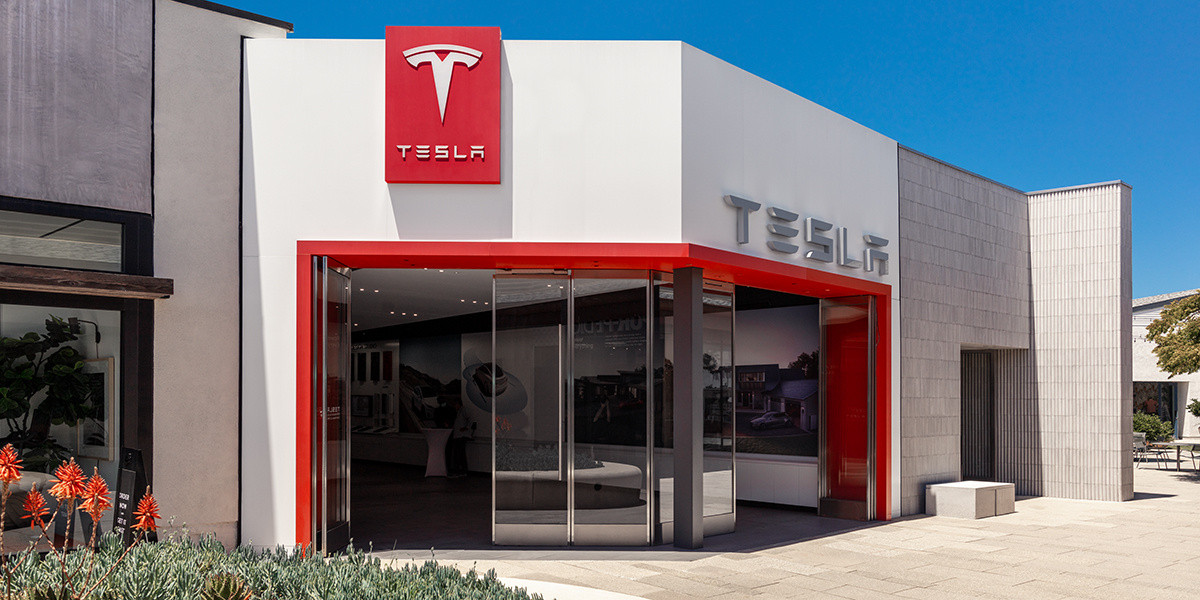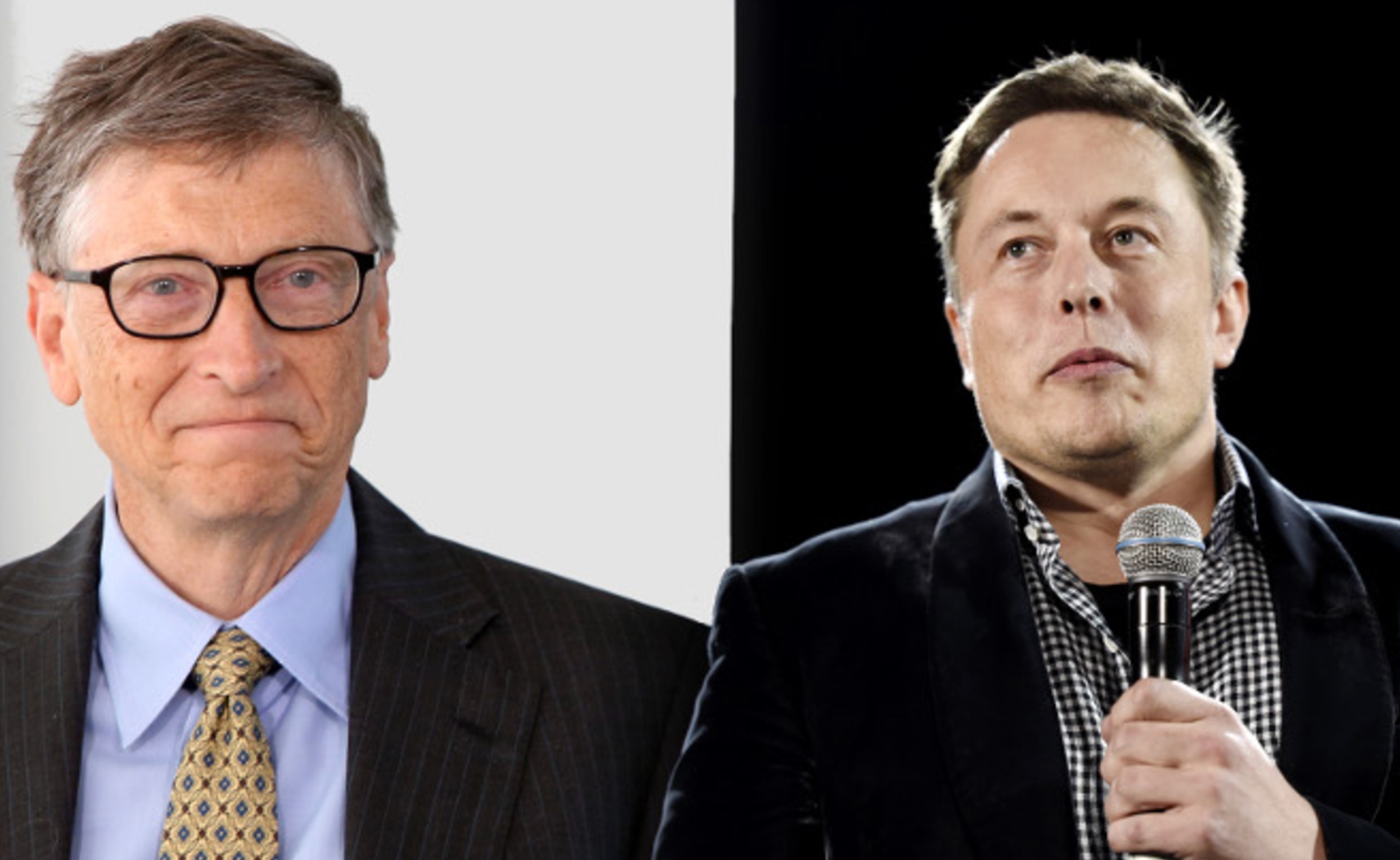News
Details behind Model X owner’s $5M+ class action lawsuit against Tesla

Following our report that a Model X owner has filed a class action law suit against Tesla, claiming a widespread defect in the vehicle’s onboard software causes sudden unattended acceleration (SUA), new details behind the suit have been obtained by Teslarati that shows a legal team aggressively targeting the core component to the Silicon Valley-based electric car maker’s fleet of vehicles.
The class action filed in federal district court claims Ji Chang Son – Korean star residing in Orange County, Calif. – crashed through his garage and into the living room of his home after his Tesla Model X accelerated suddenly and without warning on September 10, 2016, approximately one month after Mr. Son took delivery of the electric SUV. The suit claims that “Tesla has failed to properly disclose, explain, fix, or program safeguards to correct the underlying problem of unintended acceleration”, adding that “over sixteen thousand Model X owners with vehicles that could potentially accelerate out of control.
Son’s attorneys gave the court a full account of the development of the Model X, focusing on the company’s claim that the Model X is “the safest, fastest and most capable sport utility vehicle in history.” On the contrary, according to Son’s attorneys. They allege the Model X has a safety defect that permits the car to accelerate at full speed directly into solid objects, such as the exterior wall of Son’s home. In particular, they point out that 8 written complaints have already been filed with the National Highway Transportation Safety Administration from other Model X owners who report similar occurrences while driving their cars.
The lawsuit reads,
“Irrespective of whether the SUA events in the Model X are caused by mechanical issues with the accelerator pedal, an unknown failure in the electronic motor control system, a failure in other aspects of the electrical, mechanical, or computer systems, or some instances of pedal misapplication, the Model X is defective and unsafe. Tesla’s lack of response to this phenomenon is even more confounding when the vehicle is already equipped with the hardware necessary for the vehicle’s computer to be able to intercede to prevent unintended acceleration into fixed objects such as walls, fences, and buildings.
Despite repeated instances of Model X drivers reporting uncommanded full power acceleration while parking, Tesla has failed to develop and implement computer algorithms that would eliminate the danger of full power acceleration into fixed objects.This failure to provide a programming fix is especially confounding for a vehicle that knows when it is located at the driver’s home and is being parked in the garage, yet carries out an instruction, regardless of whether through an error by the vehicle control systems or by driver pedal misapplication, to accelerate at full power into the garage wall.
Further, not only has Tesla failed to fix the problems, it has chosen instead to follow in the footsteps of other automobile manufacturers and simply blame the driver.”
One problem, according to Son’s attorneys, is the software that controls the Automatic Emergency Braking system. Tesla has programmed that feature to disengage in order to allow drivers to make emergency maneuvers, “in situations where you are taking action to avoid a potential collision. For example:
- You turn the steering wheel sharply.
- You press the accelerator pedal.
- You press and release the brake pedal.
- A vehicle, motorcycle, bicycle, or pedestrian, is no longer detected ahead.”
In other words, say the attorneys, a Model X will drive straight into a solid wall if that is what the system thinks the driver wants it to do. “Apparently, this includes situations where the computer believes, rightly or wrongly, that the driver is commanding full power acceleration directly into fixed objects immediately in front of the vehicle.”
Class action lawsuits are complex and highly specialized legal actions. Federal law requires that the damages alleged for the entire class exceed $5 million. The plaintiff’s attorney have done so by claiming that Tesla is aware of at least two other instances in which drivers allege sudden unintended acceleration occurred while driving their Model X at low speeds. They then extrapolate those numbers to suggest that the rate of SUA incidents attributable to the Model X is 64 per 100,000 vehicles — substantially higher than for any other vehicle in history.
They point out that the incidence rate of SUA incidents for Toyota vehicles — which grabbed national headlines in 2010 — was far lower. They then go on to remind the court that Toyota paid several hundred million dollars to SUA victims as well as a $1.2 billion federal fine. Notice that the chart included in the pleadings shows an exaggerated and disproportionate projected SUA incidence rate for the Model X highlighted in bright red.
Tesla says its data retrieved from the vehicle’s blackbox shows the accelerator in Son’s Model X was fully depressed when the accident occurred. The question for the court will be whether the driver pressed the wrong pedal or whether the vehicle accelerated on its own. It is unclear whether a software failure would register the pedal as fully depressed even if it was not physically operated by the driver.
Plaintiffs always have the burden of proving their allegations. Attorneys for injured parties often rely on a legal doctrine known as res ipsa loquitur, which is Latin for “the thing speaks for itself.” Loosely translated, it means “we don’t know what is wrong with your product that you designed and built, but you know or should know.” Res ipsa loquitur shifts the burden of proof onto the defendant, which makes it much easier for a plaintiff to prevail in court.
One advantage the plaintiff gains from filing suit is the ability to discover what information Tesla has that is not yet public. Does Tesla know something it isn’t telling its customers? We may find out as this litigation goes forward.
We’ve provided a copy of the entire class action filing below.
[pdf-embedder url=”http://www.teslarati.com/wp-content/uploads/2017/01/Son-vs-Telsa-class-action-8-16-cv-2282.pdf”]

News
Tesla dispels reports of ‘sales suspension’ in California
“This was a “consumer protection” order about the use of the term “Autopilot” in a case where not one single customer came forward to say there’s a problem.
Sales in California will continue uninterrupted.”

Tesla has dispelled reports that it is facing a thirty-day sales suspension in California after the state’s Department of Motor Vehicles (DMV) issued a penalty to the company after a judge ruled it “misled consumers about its driver-assistance technology.”
On Tuesday, Bloomberg reported that the California DMV was planning to adopt the penalty but decided to put it on ice for ninety days, giving Tesla an opportunity to “come into compliance.”
Tesla enters interesting situation with Full Self-Driving in California
Tesla responded to the report on Tuesday evening, after it came out, stating that this was a “consumer protection” order that was brought up over its use of the term “Autopilot.”
The company said “not one single customer came forward to say there’s a problem,” yet a judge and the DMV determined it was, so they want to apply the penalty if Tesla doesn’t oblige.
However, Tesla said that its sales operations in California “will continue uninterrupted.”
It confirmed this in an X post on Tuesday night:
This was a “consumer protection” order about the use of the term “Autopilot” in a case where not one single customer came forward to say there’s a problem.
Sales in California will continue uninterrupted.
— Tesla North America (@tesla_na) December 17, 2025
The report and the decision by the DMV and Judge involved sparked outrage from the Tesla community, who stated that it should do its best to get out of California.
One X post said California “didn’t deserve” what Tesla had done for it in terms of employment, engineering, and innovation.
Tesla has used Autopilot and Full Self-Driving for years, but it did add the term “(Supervised)” to the end of the FSD suite earlier this year, potentially aiming to protect itself from instances like this one.
This is the first primary dispute over the terminology of Full Self-Driving, but it has undergone some scrutiny at the federal level, as some government officials have claimed the suite has “deceptive” naming. Previous Transportation Secretary Pete Buttigieg was vocally critical of the use of the name “Full Self-Driving,” as well as “Autopilot.”
News
New EV tax credit rule could impact many EV buyers
We confirmed with a Tesla Sales Advisor that any current orders that have the $7,500 tax credit applied to them must be completed by December 31, meaning delivery must take place by that date. However, it is unclear at this point whether someone could still claim the credit when filing their tax returns for 2025 as long as the order reflects an order date before September 30.

Tesla owners could be impacted by a new EV tax credit rule, which seems to be a new hoop to jump through for those who benefited from the “extension,” which allowed orderers to take delivery after the loss of the $7,500 discount.
After the Trump Administration initiated the phase-out of the $7,500 EV tax credit, many were happy to see the rules had been changed slightly, as deliveries could occur after the September 30 cutoff as long as orders were placed before the end of that month.
However, there appears to be a new threshold that EV buyers will have to go through, and it will impact their ability to get the credit, at least at the Point of Sale, for now.
Delivery must be completed by the end of the year, and buyers must take possession of the car by December 31, 2025, or they will lose the tax credit. The U.S. government will be closing the tax credit portal, which allows people to claim the credit at the Point of Sale.
🚨UPDATE: $7,500 Tax Credit Portal “Closes By End of Year”.
This is bad news for pending Tesla buyers (MYP) looking to lock in the $7,500 Tax Credit.
“it looks like the portal closes by end of the year so there be no way for us to guarantee the funds however, we will try our… pic.twitter.com/LnWiaXL30k
— DennisCW | wen my L (@DennisCW_) December 15, 2025
We confirmed with a Tesla Sales Advisor that any current orders that have the $7,500 tax credit applied to them must be completed by December 31, meaning delivery must take place by that date.
However, it is unclear at this point whether someone could still claim the credit when filing their tax returns for 2025 as long as the order reflects an order date before September 30.
If not, the order can still go through, but the buyer will not be able to claim the tax credit, meaning they will pay full price for the vehicle.
This puts some buyers in a strange limbo, especially if they placed an order for the Model Y Performance. Some deliveries have already taken place, and some are scheduled before the end of the month, but many others are not expecting deliveries until January.
Elon Musk
Elon Musk takes latest barb at Bill Gates over Tesla short position
Bill Gates placed a massive short bet against Tesla of ~1% of our total shares, which might have cost him over $10B by now

Elon Musk took his latest barb at former Microsoft CEO Bill Gates over his short position against the company, which the two have had some tensions over for a number of years.
Gates admitted to Musk several years ago through a text message that he still held a short position against his sustainable car and energy company. Ironically, Gates had contacted Musk to explore philanthropic opportunities.
Elon Musk explains Bill Gates beef: He ‘placed a massive bet on Tesla dying’
Musk said he could not take the request seriously, especially as Gates was hoping to make money on the downfall of the one company taking EVs seriously.
The Tesla frontman has continued to take shots at Gates over the years from time to time, but the latest comment came as Musk’s net worth swelled to over $600 billion. He became the first person ever to reach that threshold earlier this week, when Tesla shares increased due to Robotaxi testing without any occupants.
Musk refreshed everyone’s memory with the recent post, stating that if Gates still has his short position against Tesla, he would have lost over $10 billion by now:
Bill Gates placed a massive short bet against Tesla of ~1% of our total shares, which might have cost him over $10B by now
— Elon Musk (@elonmusk) December 17, 2025
Just a month ago, in mid-November, Musk issued his final warning to Gates over the short position, speculating whether the former Microsoft frontman had still held the bet against Tesla.
“If Gates hasn’t fully closed out the crazy short position he has held against Tesla for ~8 years, he had better do so soon,” Musk said. This came in response to The Gates Foundation dumping 65 percent of its Microsoft position.
Tesla CEO Elon Musk sends final warning to Bill Gates over short position
Musk’s involvement in the U.S. government also drew criticism from Gates, as he said that the reductions proposed by DOGE against U.S.A.I.D. were “stunning” and could cause “millions of additional deaths of kids.”
“Gates is a huge liar,” Musk responded.
It is not known whether Gates still holds his Tesla short position.









